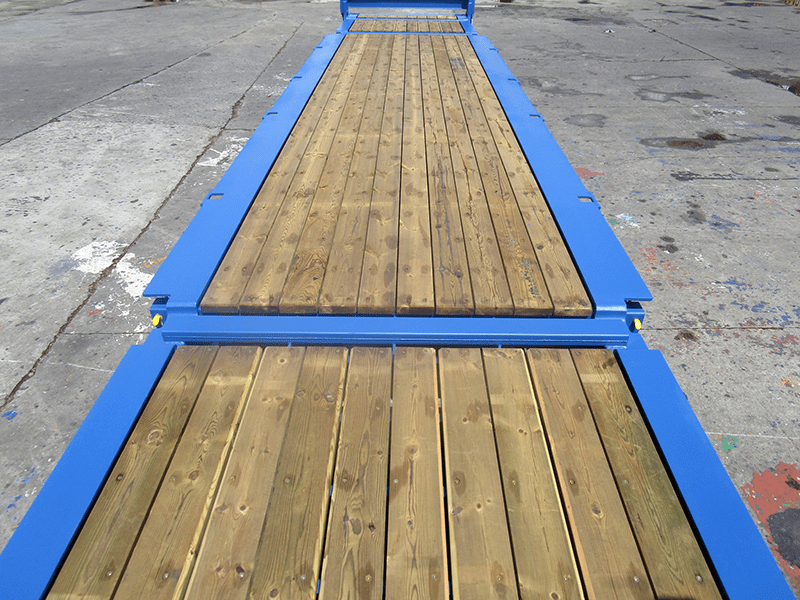D.Jaya
Civil/Environmental
- Sep 11, 2017
- 29
How to improve the load carrying capacity of an existing RCC slab deck bridge
I am seeking an advice from Engineers having experienced in bridge design/bridge construction, who are members of this forum
There is RCC slab deck bridge is at a rural village area in Liberia (western Africa) We are doing a mini Hydro electric project at a nearby Village and our heavy machinery etc to be transported over this bridge once we receive the shipment.
We don’t having the values of loadings where the bridge has been designed for or any other structural details related to this RCC Bridge. So we don’t having a proper idea whether can it withstand the loading of heavy equipment during transportation to the site. (Our heaviest equipment to be a electrical generator which the load is about 7Tons + transporting vehicle weight(Low bed)
I am a structural Engineer with design experience related to buildings. Our management, who is the contractor for the mini hydro project want me to prepare a report to the owner regarding the improvements (where necessary) to strengthen this bridge and other roadside structures (such as RCC culverts)I can provide solutions for the RCC culverts but I am having no proper idea about how to strengthen(If necessary) the bridge.
The said bridge 22 m long having 02 spans each 11.0m in length and with a central Pier and two abutments. Slab deck thickness to be about 250mm.Also Gr: 30 concrete to be assumed has been used .It can assume that the bridge has been constructed about 15 years ago. So far the structure is functioning without visible defects.
My proposed strengthening arrangement(02 steel beams will hang from steel girders and the end of the girders to be rest on additional concrete footing or an existing pier extension as shown (Ref to the attached sketch)
Please comment on the following
1)If I were to design for the additional supporting(steel members)for an extra loading, can we assume what percentage of the total loadings to be taken by the additional supporting structure
2)Can I assume that the additional Steel Beams in between the 11 m span (of 11/2 =5.5m ) to take the loading from the deck as a Simply Supported beam
3)please comment on the ways related to improving Punching shear resistance for the RCC bridge deck
4)Pl. suggest any other suitable strength improvement scheme regarding this bridge & any literature sources etc.
(Also please note that this arrangement will provide a solution to function the bridge for the traffic during the construction work (related to strengthening). There is no way to build intermediate Piers due to the river flow and also the strengthening work to be done in a shortest possible time duration
I am seeking an advice from Engineers having experienced in bridge design/bridge construction, who are members of this forum
There is RCC slab deck bridge is at a rural village area in Liberia (western Africa) We are doing a mini Hydro electric project at a nearby Village and our heavy machinery etc to be transported over this bridge once we receive the shipment.
We don’t having the values of loadings where the bridge has been designed for or any other structural details related to this RCC Bridge. So we don’t having a proper idea whether can it withstand the loading of heavy equipment during transportation to the site. (Our heaviest equipment to be a electrical generator which the load is about 7Tons + transporting vehicle weight(Low bed)
I am a structural Engineer with design experience related to buildings. Our management, who is the contractor for the mini hydro project want me to prepare a report to the owner regarding the improvements (where necessary) to strengthen this bridge and other roadside structures (such as RCC culverts)I can provide solutions for the RCC culverts but I am having no proper idea about how to strengthen(If necessary) the bridge.
The said bridge 22 m long having 02 spans each 11.0m in length and with a central Pier and two abutments. Slab deck thickness to be about 250mm.Also Gr: 30 concrete to be assumed has been used .It can assume that the bridge has been constructed about 15 years ago. So far the structure is functioning without visible defects.
My proposed strengthening arrangement(02 steel beams will hang from steel girders and the end of the girders to be rest on additional concrete footing or an existing pier extension as shown (Ref to the attached sketch)
Please comment on the following
1)If I were to design for the additional supporting(steel members)for an extra loading, can we assume what percentage of the total loadings to be taken by the additional supporting structure
2)Can I assume that the additional Steel Beams in between the 11 m span (of 11/2 =5.5m ) to take the loading from the deck as a Simply Supported beam
3)please comment on the ways related to improving Punching shear resistance for the RCC bridge deck
4)Pl. suggest any other suitable strength improvement scheme regarding this bridge & any literature sources etc.
(Also please note that this arrangement will provide a solution to function the bridge for the traffic during the construction work (related to strengthening). There is no way to build intermediate Piers due to the river flow and also the strengthening work to be done in a shortest possible time duration

![[idea] [idea] [idea]](/data/assets/smilies/idea.gif)
